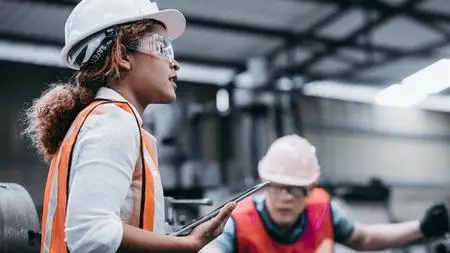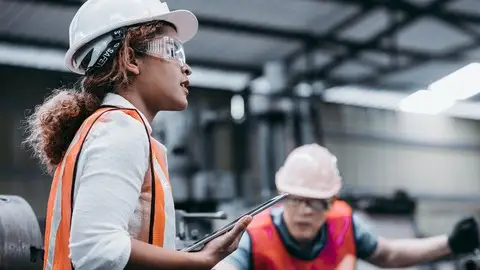Machine Guarding Safety (Safeguarding) Course
Published 4/2024
MP4 | Video: h264, 1920x1080 | Audio: AAC, 44.1 KHz
Language: English | Size: 236.45 MB | Duration: 0h 41m
Published 4/2024
MP4 | Video: h264, 1920x1080 | Audio: AAC, 44.1 KHz
Language: English | Size: 236.45 MB | Duration: 0h 41m
Safeguarding Equipment and Protecting Employees from Amputation
What you'll learn
Gain a comprehensive understanding of OSHA’s safety requirements and how to apply them in a work environment.
Identify any machine parts, functions or processes that may be hazardous and the proper safeguards that must be put in place.
Understand the various types of movements each machine makes to prevent injury
Differentiate between guards and devices to determine which is best for their purpose. Also understand the various types of safeguards and their proper usage
Identify potential hazards and work to enact safeguards quickly and efficiently
Requirements
Foundational knowledge of HSE will be helpful for proper understanding of this course
Health, Safety and Environment Essentials (HSE Level 1) course is recommended
Description
Moving machine parts have the potential to cause severe workplace injuries, such as crushed fingers or hands, amputations, burns, or blindness. Safeguards are essential for protecting workers from these preventable injuries. Any machine part, function, or process that may cause injury must be safeguarded. When the operation of a machine or accidental contact injure the operator or others in the vicinity, the hazards must be eliminated or controlled. This course contains the necessary information on the various hazards of mechanical motion and techniques for protecting workers. The course provides training on the essentials of machinery guarding to those who work closely with machinery in their organisation.Our machine guarding course provides participants with a comprehensive understanding of OSHA’s safety requirements and how to apply them in a work environment. Participants will learn about any machine parts, functions or processes that may be hazardous and the proper safeguards that must be put in place.This course emphasizes the importance of complying with OSHA regulations and it helps participants to:Understand the various types of movements each machine makes to prevent injuryDifferentiate between guards and devices to determine which is best for their purposeIdentify potential hazards and work to enact safeguards quickly and efficientlySome of the topics covered include:The legal requirements for guards and safety protection devicesManaging the Safeguarding programThe Hierarchy of Controls for SafeguardingDeciding when moving parts are safe by design and when they need to be guardedRequirements for fixed guardsRequirements for interlocking guardsChoosing interlocking devices for guardsRequirements for safety protection devicesThe course contains case studies, additional explanatory videos, quizzes, further study materials and a Machine Guarding Checklist for your guidance.
Overview
Section 1: Machine Guarding Safety (Safeguarding) Course
Lecture 1 Facilitator Introduction
Lecture 2 Course Introduction
Lecture 3 Case Study
Lecture 4 Introduction to Machine Guarding
Lecture 5 Safeguarding
Lecture 6 Guard Types Part 1
Lecture 7 Guard Types Part 2
Lecture 8 Safeguarding Program
This training is suitable for personnel requiring an awareness or understanding of the hazards and controls associated with working with machines.,All personnel that are reasonably anticipated to work on machines and as such may be exposed to hazards machines may pose to its operators and those around,Supervisors and Managers that wish to acquire better understanding of Machine Guarding standards and procedures for a safe workplace,Anyone who is involved in the design, maintenance and inspection of guards and safety protection devices. This will include maintenance engineers, project engineers, technicians, machine operators and safety professionals.



